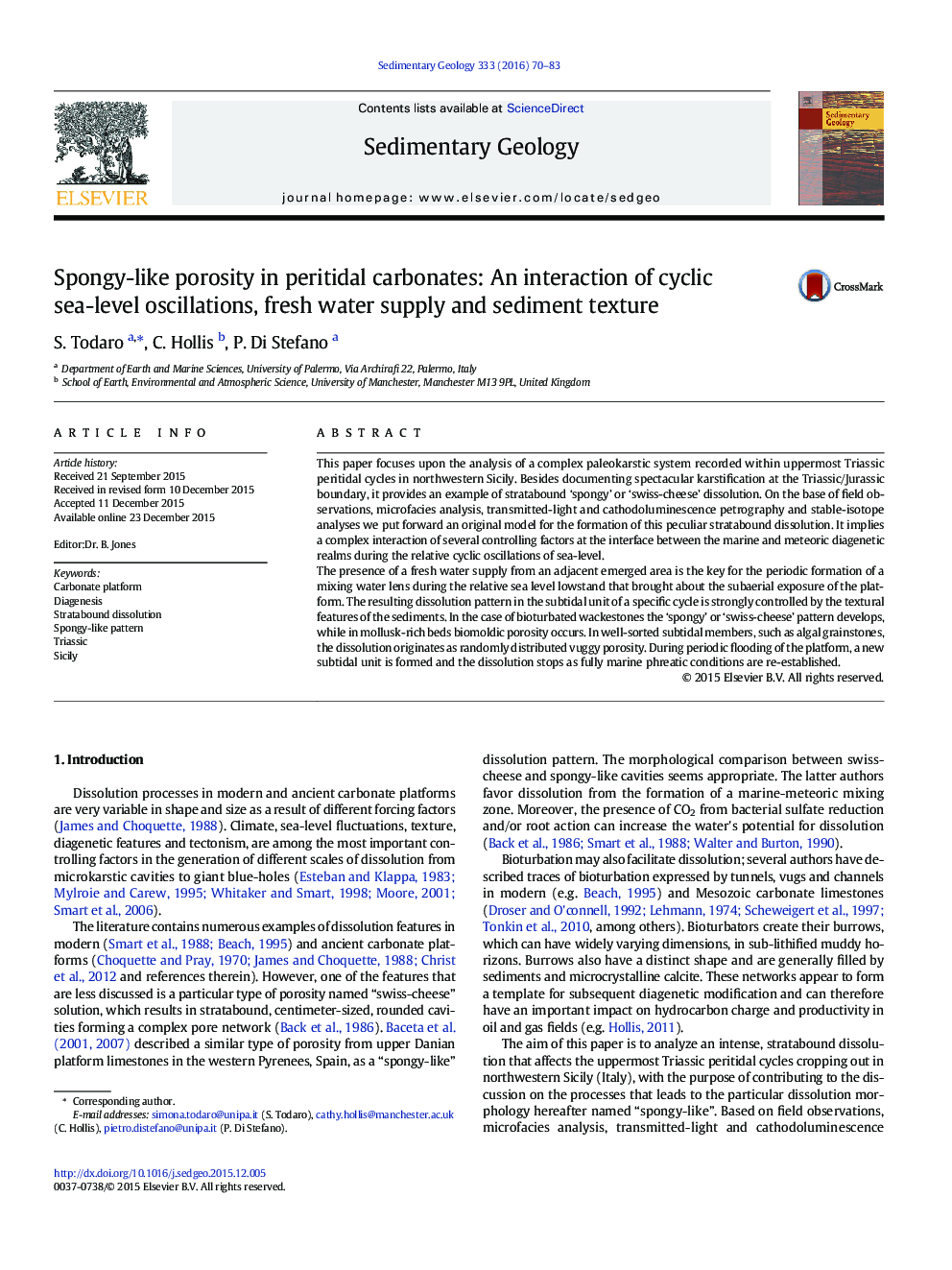| Article ID | Journal | Published Year | Pages | File Type |
|---|---|---|---|---|
| 4689121 | Sedimentary Geology | 2016 | 14 Pages |
This paper focuses upon the analysis of a complex paleokarstic system recorded within uppermost Triassic peritidal cycles in northwestern Sicily. Besides documenting spectacular karstification at the Triassic/Jurassic boundary, it provides an example of stratabound ‘spongy’ or ‘swiss-cheese’ dissolution. On the base of field observations, microfacies analysis, transmitted-light and cathodoluminescence petrography and stable-isotope analyses we put forward an original model for the formation of this peculiar stratabound dissolution. It implies a complex interaction of several controlling factors at the interface between the marine and meteoric diagenetic realms during the relative cyclic oscillations of sea-level.The presence of a fresh water supply from an adjacent emerged area is the key for the periodic formation of a mixing water lens during the relative sea level lowstand that brought about the subaerial exposure of the platform. The resulting dissolution pattern in the subtidal unit of a specific cycle is strongly controlled by the textural features of the sediments. In the case of bioturbated wackestones the ‘spongy’ or ‘swiss-cheese’ pattern develops, while in mollusk-rich beds biomoldic porosity occurs. In well-sorted subtidal members, such as algal grainstones, the dissolution originates as randomly distributed vuggy porosity. During periodic flooding of the platform, a new subtidal unit is formed and the dissolution stops as fully marine phreatic conditions are re-established.
